Bobcats (Lynx rufus) are among the most fascinating wild cats native to North America, and Indiana is no exception to their range. These medium-sized predators have long captured the imagination of wildlife enthusiasts and residents alike due to their elusive nature and remarkable adaptability. While bobcats are often difficult to observe in the wild, their presence in Indiana is steadily increasing, thanks to improved conservation efforts and changing landscapes.
This article explores surprising facts about bobcats in Indiana, revealing insights into their behavior, habitat, and relationship with humans.
The Eastern Bobcat: Indiana’s Native Wildcat
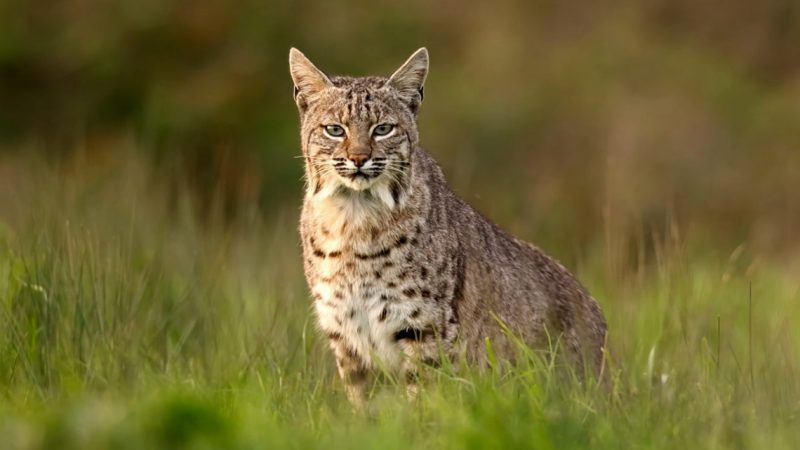
Indiana’s bobcats belong to the Eastern subspecies, known scientifically as Lynx rufus rufus. This subspecies is widespread throughout the eastern United States and is well-suited to the diverse environments found in Indiana, from dense forests to wetlands and rolling hills. Typically, Eastern bobcats weigh between 15 and 35 pounds and measure around 2 to 4 feet in length, including their distinctive “bobbed” tail.
The bobcat’s coat varies in color from tawny brown to grayish tones, patterned with dark spots and stripes that provide excellent camouflage in the forest understory. Its short tail, roughly 4 to 6 inches long, ends with a black tip that helps with identification. Bobcats possess sharp eyesight and hearing, along with muscular limbs that allow them to pounce on prey with agility and speed.
Indiana’s Diverse Habitats Support Bobcat Populations
Indiana offers a patchwork of habitats that are ideal for bobcats, including deciduous forests, mixed woodlands, wetlands, and brushy fields. These cats prefer areas with dense cover where they can stalk prey and hide from larger predators or human disturbances. The southern and south-central regions of Indiana, with their expansive forest tracts and relatively low human population density, provide some of the best habitats for bobcats.
Bobcats are highly adaptable and can thrive in environments ranging from swampy lowlands to upland hardwood forests. Their ability to adjust to varying terrain and food availability makes Indiana a favorable place for these wildcats to establish territories. Moreover, the recovery of natural habitats due to reforestation and conservation has helped bobcat numbers rebound over recent decades.
Secretive Behavior Makes Bobcats Hard to Spot
One of the most surprising aspects of bobcats in Indiana is just how elusive they are. These wildcats are primarily nocturnal or crepuscular, meaning they are most active during dawn and dusk. Their shy and solitary nature means they avoid human contact whenever possible, making sightings relatively rare.
Bobcats use stealth and patience when hunting, relying on their excellent camouflage and quiet movements to approach prey. They mark their territories with scent glands and scratch marks to communicate with other bobcats and reduce direct confrontations. Unlike many social carnivores, bobcats live alone, with males and females typically only interacting during the breeding season.
Because bobcats are so secretive, wildlife researchers rely heavily on remote camera traps, track surveys, and citizen reports to monitor their populations in Indiana. These tools have revealed more about bobcat distribution and behaviors but also highlight how much remains unknown about these solitary cats.
The Role of Bobcats in Indiana’s Ecosystem
Bobcats play an important role as mid-sized predators in Indiana’s ecosystems. By preying on rabbits, rodents, birds, and other small mammals, bobcats help regulate prey populations and maintain ecological balance. Their presence contributes to healthy forests by preventing overgrazing and supporting plant regeneration.
As natural predators, bobcats also compete with coyotes and foxes for food, creating a dynamic predator community that influences the structure of Indiana’s wildlife populations. This balance is crucial in maintaining biodiversity and the overall health of natural habitats.
Bobcats’ Comeback in Indiana: A Conservation Success Story
Historically, bobcats faced severe declines in Indiana due to extensive trapping, hunting, and habitat loss from agricultural expansion and urban development. By the mid-20th century, their numbers were so low that they were considered nearly extirpated from much of the state.
Fortunately, over the past few decades, conservation laws and habitat restoration efforts have allowed bobcat populations to recover significantly. Indiana has designated bobcats as a protected species, prohibiting hunting and trapping, which has been critical in their rebound.
Today, sightings and evidence of bobcats are becoming more frequent, especially in forested southern Indiana. This resurgence is a testament to the resilience of the species and the success of conservation initiatives. Ongoing research continues to monitor bobcat populations to ensure they remain stable and sustainable.
Interactions Between Bobcats and Humans in Indiana
While bobcats prefer to avoid humans, encounters do happen occasionally, particularly in rural or suburban areas where natural habitats overlap with human developments. These interactions are usually harmless, as bobcats tend to flee when approached.
Concerns sometimes arise among farmers and pet owners because bobcats can prey on small livestock, such as chickens or rabbits. However, such incidents are rare and can often be prevented with proper fencing and animal husbandry practices.
Educating the public about bobcat behavior and promoting coexistence is important in reducing conflicts and fostering appreciation for these native wildcats. Residents are encouraged to report bobcat sightings to local wildlife agencies to aid in population monitoring.
Unique Adaptations That Make Bobcats Successful Hunters
Bobcats possess several physical and behavioral adaptations that make them effective predators. Their keen senses of sight and hearing enable them to detect prey movements even under low light conditions. Their muscular build and powerful legs allow for impressive leaps and rapid sprints to capture agile prey.
Their retractable claws provide a firm grip on slippery or struggling animals, while their sharp teeth are designed to deliver fatal bites quickly. Bobcats also use stealth and patience, often stalking their prey for extended periods before striking.
In addition to terrestrial hunting, bobcats are proficient climbers and swimmers, allowing them to pursue prey in trees or across water obstacles. These abilities increase their chances of survival across diverse habitats in Indiana.
Breeding and Life Cycle of Indiana’s Bobcats
Bobcats typically breed once a year, usually between late winter and early spring. Females give birth to litters of one to six kittens after a gestation period of about two months. The young are born blind and helpless, relying entirely on their mother for warmth and food.
Kittens remain with their mother for several months learning essential hunting and survival skills. By fall, they begin to disperse to establish their own territories. Survival rates for young bobcats depend heavily on food availability and predation pressures.
In the wild, bobcats can live up to 10 to 12 years, though many face natural threats such as disease, competition, and vehicle collisions. Indiana’s expanding forest cover and protection policies are crucial for supporting healthy lifespans among bobcats.
Challenges and Threats Facing Bobcats in Indiana
Despite their successful comeback, bobcats in Indiana still face challenges. Habitat fragmentation due to road construction, urban sprawl, and agricultural activities can isolate populations, limiting genetic diversity and access to resources.
Vehicle collisions are a significant cause of mortality, especially where highways cross natural habitats. Illegal trapping or shooting, though reduced, can still pose threats in some areas.
Climate change also has the potential to alter habitats and prey availability, introducing new uncertainties for bobcat populations. Continued monitoring, habitat connectivity efforts, and public education are vital to addressing these ongoing challenges.
How to Observe and Appreciate Bobcats Responsibly
For those interested in observing bobcats in Indiana, patience and respect for wildlife are essential. The best chance to see bobcats is at dawn or dusk near forest edges, wetlands, or remote areas where human activity is minimal.
Using remote trail cameras or joining guided wildlife tours can increase opportunities to witness bobcats without disturbing them. It’s important never to attempt to approach or feed wild bobcats, as this can be dangerous for both animals and humans.
Appreciating bobcats from a distance and supporting conservation efforts help ensure that these remarkable wildcats continue to thrive in Indiana’s natural landscapes.
Frequently Asked Questions About Bobcats in Indiana
What Do Bobcats in Indiana Eat?
Bobcats in Indiana primarily feed on small mammals such as rabbits, squirrels, and rodents. They also hunt birds, reptiles, and occasionally insects. Their diet varies depending on seasonal availability and habitat conditions.
Are Bobcats Dangerous to Humans in Indiana?
Bobcats are generally shy and avoid humans. They rarely pose a threat unless cornered or provoked. Attacks on humans are extremely rare, and bobcats usually flee when they detect human presence.
Where Are Bobcats Most Commonly Found in Indiana?
Bobcats are most commonly found in southern and south-central Indiana, where forests and natural habitats are abundant. They prefer dense woodland areas, wetlands, and rugged terrain with plenty of cover.
How Can I Identify a Bobcat in the Wild?
Bobcats have a distinctive short “bobbed” tail with a black tip, tufted ears, and spotted or striped brownish-gray fur. They are medium-sized cats, larger than domestic cats but smaller than cougars, measuring about 2 to 4 feet long including the tail.
Are Bobcats Protected by Law in Indiana?
Yes, bobcats are a protected species in Indiana. Hunting and trapping bobcats are prohibited to help maintain their populations and encourage their recovery throughout the state.

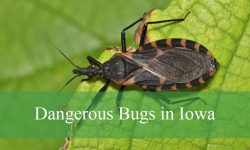
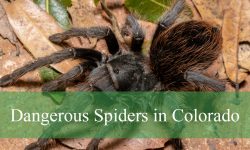

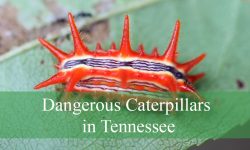
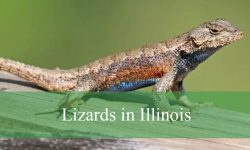

Bobcats are not protected in Indiana.A dumbass few republicans created a hunting season.